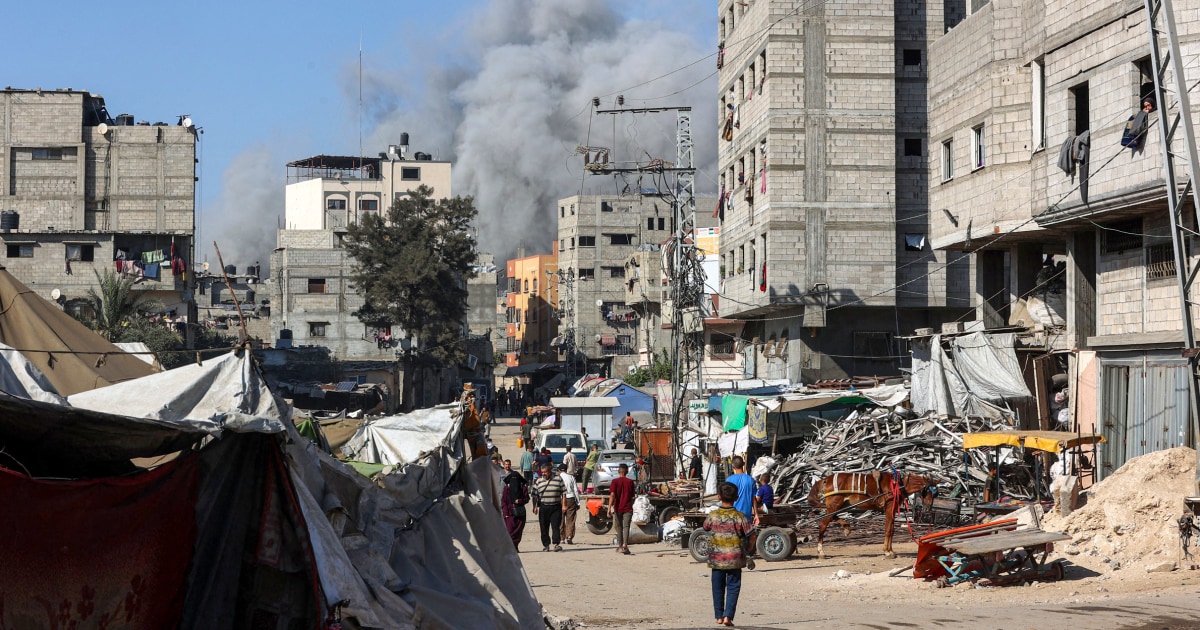
Key Hamas Founder Killed in Gaza Strike: Israel Eliminates Hakham Muhammad Issa Al-Issa
The Israel Defense Forces (IDF) announced the targeted killing of Hakham Muhammad Issa Al-Issa, a co-founder of Hamas and a key figure in planning the October 7th attack, marking a significant blow to the militant group’s leadership.
Eliminating a Founding Figure: Al-Issa’s Role in Hamas’s Structure and Operations
In a statement released Friday, the IDF confirmed the death of Hakham Muhammad Issa Al-Issa in a strike within Gaza City. Al-Issa was a pivotal figure in the establishment of Hamas, playing a crucial role in founding both the organization itself and its military wing. He held a high-ranking position within the group prior to the October 7th attacks and, at the time of his death, served as the head of Hamas’s combat support headquarters. Furthermore, Al-Issa was a member of Hamas’s General Security Council, demonstrating his influence within the organization’s highest echelons.
The IDF described Al-Issa as a crucial source of knowledge and one of the last remaining senior Hamas terrorists in the Gaza Strip. Throughout his career, he spearheaded the group’s force-buildup efforts, previously leading the training headquarters and actively working to rebuild organizational systems damaged by Israeli strikes during the ongoing conflict. The IDF also asserted that Al-Issa played a significant role in the planning and execution of the October 7th massacre, which resulted in the deaths of over 1,200 people in Israel and the abduction of more than 250 hostages. Nearly two years later, 50 hostages remain in captivity, with 28 presumed dead.
The elimination of Al-Issa represents a significant strategic victory for Israel, removing a key architect of the October 7th attacks and a central figure in Hamas’s military infrastructure. This operation is part of a broader campaign by the IDF to dismantle Hamas’s leadership structure and avenge the atrocities committed on October 7th. Israel has already killed several other high-ranking Hamas officials since the attacks, including chief Mohammed Sinwar in May.
The Escalating Conflict and Prospects for a Ceasefire
Israel’s retaliatory assault on the Gaza Strip following the October 7th attacks has resulted in a devastating humanitarian crisis, with over 56,000 Palestinians killed and thousands more wounded, displaced, and lacking essential resources. The conflict has drawn international attention and spurred calls for a ceasefire to alleviate the suffering of civilians in Gaza.
Recently, U.S. President Donald Trump indicated that a ceasefire might be possible within the coming week, though the terms and duration remain unclear. The potential for a ceasefire, whether temporary or permanent, raises hopes for a de-escalation of the conflict and the possibility of prisoner exchanges, mirroring past temporary agreements. However, the path to a lasting resolution remains fraught with challenges, given the deep-seated animosity and complex political dynamics at play.
The IDF has pledged to continue its operations to eliminate all terrorists involved in the October 7th massacre, signaling that the conflict is likely to continue until Hamas’s military capabilities are substantially degraded. The ongoing hostilities underscore the urgent need for a comprehensive and sustainable solution that addresses the root causes of the conflict and ensures the security and well-being of both Israelis and Palestinians.
Key Takeaways
- The IDF killed Hakham Muhammad Issa Al-Issa, a co-founder of Hamas and a key planner of the October 7th attack.
- Al-Issa held a high-ranking position within Hamas, serving as head of its combat support headquarters and a member of the General Security Council.
- The IDF asserts Al-Issa played a key role in rebuilding Hamas’s organizational structure and advancing attacks against Israeli citizens.
- Israel’s retaliatory assault on Gaza has resulted in a significant humanitarian crisis, with over 56,000 Palestinians killed.
- Prospects for a ceasefire are emerging, but the path to a lasting resolution remains challenging and uncertain.





